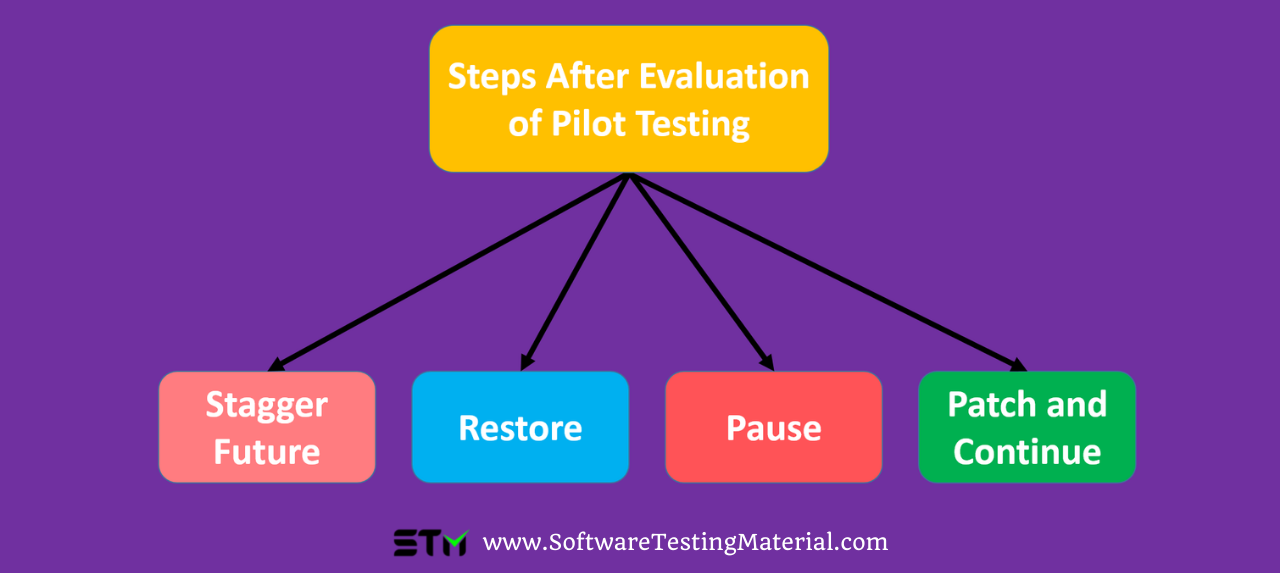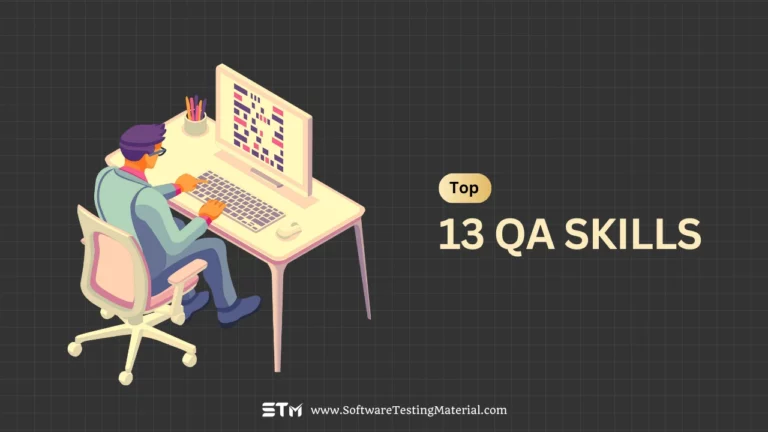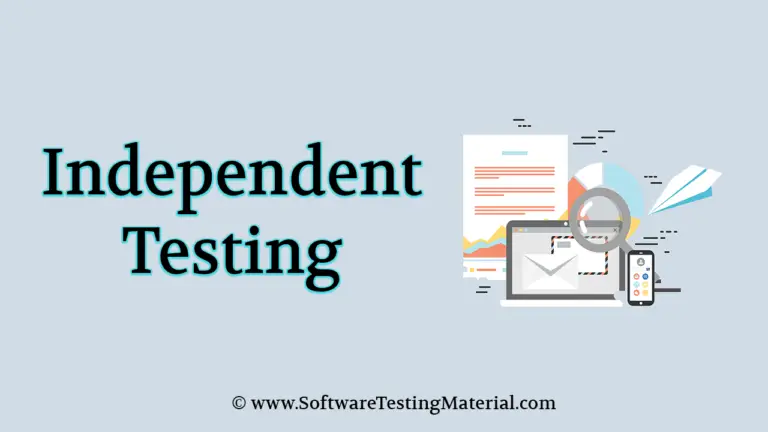What is Pilot Testing – A Detailed Step-By-Step Guide
We tech savvy people love trying out cutting edge technology be it hardware or any software. When we use such new technology, we expect some issues with the product, it is part of the fun, debugging and fixing those issues. But this scenario is not an ideal situation for our users, if they pay for a product they expect it to work flawlessly. That’s why we have pilot testing to mitigate such risk.
What is Pilot Testing
Pilot testing involves a group of users identifying the issues in a software product before launching it to the market. It is performed between User Acceptance Testing and deployment in a production environment. It also helps us understand how the user navigates through the application’s features, i.e user-friendliness of the application, how easy they can adopt our software, how much it meets user’s expectation etc.
The primary goal of pilot testing is to assess the feasibility, time, cost, risk, compatibility and performance of the software. Pilot testing is executed at different levels based on size and scope of the project. Pilot testing is a must for big budget projects.
Example of Pilot Testing
1. Instagram: Being a giant corporation, they test even the smallest update in their application and it is made possible by their budget and resources. Currently, Meta owned company Instagram is working on a new feature of “ add music” to feed posts. Pilot testing is being carried out in three different countries – India, Turkey and Brazil. Here they will invite the target user of the application and check the functionality of the application.
2. Zoom conducts pilot testing to test out their new feature update, recently they were pilot testing for adding an advertisement feature for the free version of the software.
3. Samsung: When releasing the foldable phones they tested their durability by opening and closing the phone 10,000 times using a machine. But they didn’t check the core feature with real users properly. The issue the user faced was, when the phone is folded, the hinge collects dirt, air bubbles and is vulnerable to scratches. This is an example where a company didn’t fully perform pilot testing and faced backlash because of it.
Why Pilot Testing is Important
- Pilot testing helps us to evaluate the readiness of the software
- It helps us to debug the application, very useful for last-minute tweaking.
- It can provide real-time user feedback before launching it to the market.
- It can provide a second chance for the developers to fix their mistakes.
- It can help us decide what is to be done next, either to launch or extend the deadline.
- It can help us to highlight the risks in the project.
- It helps us to align our product to the customer’s expectations.
Requisites for Conducting Pilot Testing
To conduct Pilot testing we need to follow these 3 necessary requisite steps:
- Setup the appropriate environment
- Hire the right testers
- Clear planning
#1. Setup the appropriate environment
We should set up the environment with the required hardware and software that imitates the real-life environment.
#2. Hire the right testers
We should make sure that we hire the right set of testers, they should represent the target audience of the product. Only then the feedback received from them can be taken as valid data.
#3. Proper planning
We have to plan what is required for our pilot testing- resources, equipment, staff, timeline, cost, hiring process etc should be aligned with our requirements.
Pilot Testing Process
Depending on the size and scope of the project, the level of pilot testing varies. Usually, pilot testing takes place at a lab where the user’s action of how they use the application is monitored.

- Planning
- Preparation
- Implementation
- Evaluation
- Launch
#1. Planning
Initial step in any testing process would be to plan the test. From here we would create various plans for the respective test process. This is one of the crucial steps in the pilot testing process as we derive further steps from planning.
#2. Preparation
When planning is completed we have to proceed with the preparation for pilot testing. Here we’ll set up the required environment, collect data, select a group of end-users, organize resources etc.
#3. Implementation
In this process of pilot testing, we provide the end-users with situations that a real user might face. It might be a series of tasks that cover the major functionality of the application.
#4. Evaluation
The actions of these users and the response of the software for that is recorded. we evaluate the performance of the software and how easy it was for the user to perform a task i.e user-friendliness of the software. Then we tweak the software based on the feedback.
#5. Launch
We would check whether the software meets all the requirements and its performance is satisfactory, only then we would proceed to launch the product to the market.
How to Perform Pilot Testing
We have to execute the following steps to perform pilot testing.
#1. Define Clear goals
We have to set clear goals for our pilot testing. We should know what we expect from this, is it saving time and money, making communication faster, completing the project faster? Based on the goals we set we can place a clear scope for our testing else we might end up testing everything without knowing what to do further from that.
#2. Define the timeline
We have to define the timeline in which the product is going to be tested. It should also include the time required for the setup, hiring and organising the test as well. We should have a clear idea of what is to be tested when, along with buffer time for issues and for testing rarely used features.
#3. Select Testing group
When conducting pilot testing, we have to make sure that we have a big enough group of users to get sufficient feedback, ideally, 10-20 members would do. We should also be sure that these users come in the target user of our product i.e they should be regular users of such technology.
#4. Collect feedback
We should keep in mind that pilot testing is about trial and error, it helps us find out what went right and what didn’t. Collect honest feedback from the participants through discussions, surveys and self-evaluation. Using this data, we can measure it against our goal to know what needs to be done next.
#5. Address challenges
When the pilot testing program is completed and evaluated, we should start addressing issues and problems that we received in the feedback. We have to make decisions upon fixing defects, patching minor issues, defining more use cases etc.
What should we consider in Pilot Testing
We have to consider the following factors before conducting out pilot test.1
#1. Environment
It plays a vital role in pilot testing, without proper environment setup it cannot be performed. The primary goal here is to create an environment in which the actual customer will be using it in real-time.
#2. The right mix of users:
Only with the right set of users who represent the target audience of the product we can bring meaningful conclusions from our pilot testing.
#3. Proper plan:
We have to plan for resources, timelines, budget, hardware, and software required, test scenarios, deployment of servers. Also, plan the evaluation criteria as well.
#4. Documentation:
We have to prepare and share documents with the entire team. Installation procedures, test scripts, test data, scenarios that need to be tested, etc should be documented and shared with the team.
Later after the pilot testing is completed, the issues, bugs, feedback, metrics etc should be documented and shared with the appropriate team.
Pilot testing has its benefits, it can help us to test the software application more efficiently. But here are a few constraints that you might face during pilot testing your software.
Firstly, we should be aware that the user we hire to perform testing will not understand our purpose, crucial functions of the appliacation and won’t know how to proceed with the testing.
They might assume certain things as they don’t have prior knowledge about the application. This might lead to incorrect test results, the whole pilot testing would be a waste of time.
Similarly, there are other issues like time constraints, we would have created a clear schedule for our testing. Users who are unfamiliar with the application might take some more time to finish the task or not complete the task . This will lead to rework and schedule change.
Once the data is collected from the user group, evaluation and data analysis gets started. It might take more time to draw meaningful conclusions from the analysis that aligns with the goal that is set.
Steps After Evaluation of Pilot Testing
Based on the evaluation we can end up with 4 different outcomes.

Step #1. Stagger Future: We will be deploying a new version that is candid for the pilot group.
Step #2. Restore: Here we revert to the previous version.
Step #3. Pause: Here we would suspend the pilot testing.
Step #4. Patch and Continue: Here we try to fix those issues, those patches are deployed and testing continues.
Benefits of Pilot Testing
- Pilot testing is done to understand users’ points of view about our product, so we get to know their expectations.
- We can assess the success ratio of the product.
- It can help us to save costs by identifying major bugs.
- Feedback from end-users can enhance the quality of the product.
- Risk can be estimated for the launch in the market from these subsets of target users.
Pilot Testing vs Alpha Testing
| Pilot Testing | Alpha Testing |
|---|---|
| Pilot testing is performed by a group of end-users who represent the target audience | Alpha testing is performed by software tester in the project team |
| Pilot testing is conducted before beta testing | Alpha testing is conducted before beta testing and pilot testing |
| Pilot testing is not executed in long cycles | Alpha testing is executed in long cycles with multiple iterations |
| Pilot testing is conducted in an environment that imitates real-time environment | Alpha testing is conducted in testing environment at developer's site |
Don’t miss: Alpha Testing Guide
Pilot Testing vs Beta Testing
| Pilot Testing | Beta Testing |
|---|---|
| Pilot testing involves a group of end users to test the product before deployment | Beta testing involves real users in a real time environment to test the product after deployment |
| Pilot testing happens between production and UAT | Beta testing is a part of UAT, done on the client side or real environment |
| Purpose of pilot testing is to identify potential issues before it becomes costly mistakes | Purpose of beta testing is to evaluate the customer satisfaction and improve the quality of the product |
| Pilot testing is done by only limited users | Beta testing can be done by all users |
Don’t miss: Beta Testing Guide
Good Practice for Pilot Testing
- Make sure that you schedule pilot testing two days before the usability test.
- Success criteria should be agreed upon by everyone in the team, let it be the customer, project team and management.
- Ask the users if there are any mistakes in documents received, any issue with their understanding. Allow them to express concerns and get feedback, recommendations and improvements.
- Inform these users about the goal, procedures, progress, duration of the pilot testing.
Advantages of Pilot Testing
- Pilot testing can reduce the risk, it can identify the risk of failures, errors, delays in the software.
- Pilot testing helps us to verify whether our product is ready for full scale implementation.
- Pilot testing can improve and streamline the project as it receives the appropriate feedback.
- Pilot testing can open up communication and coordination between different teams as feedback received from the end user can bring more changes to the product.
- Pilot testing can identify constraints that the user might face even before the product is deployed.
Conclusion
Hope this article has provided you a clear idea about Pilot testing. Remember that Pilot testing helps us understand the feasibility of our product. Pilot testing provides us insight into the software products quality in a real world environment. It also provides us with an opportunity to fix and solve issues before the product is deployed in the product environment.
Related posts:
- UserTesting Review: How To Make Money With UserTesting.Com?
- 12 Best Performance Testing Tools | Load Testing Tools
- 20 Skills Of Highly Effective Software Tester






